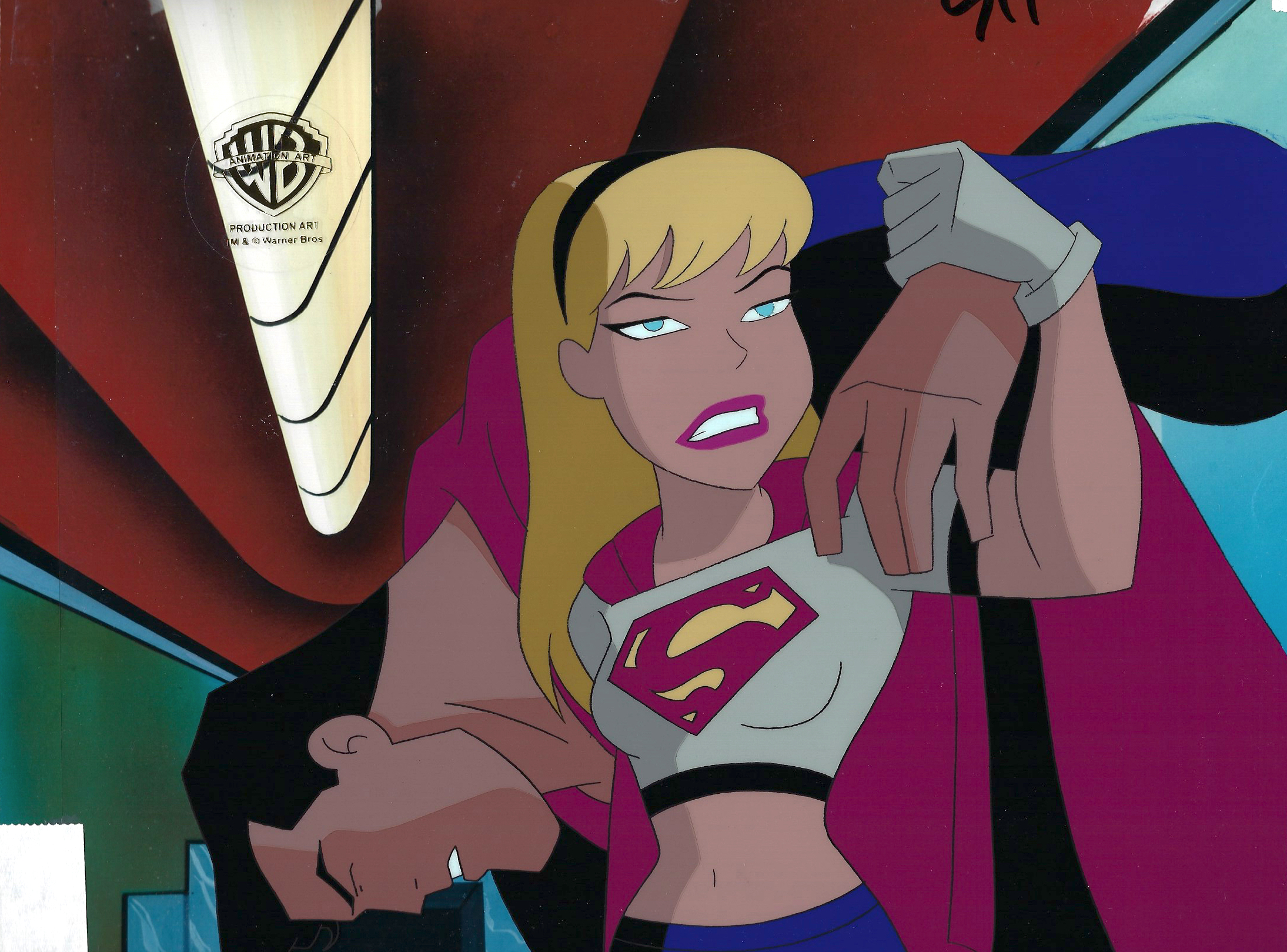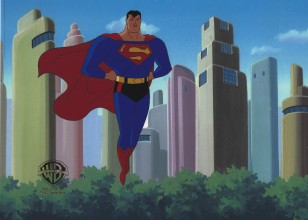Product Description
This Superman and Supergirl Original Production Cel is from the Legacy Part 1 episode from Superman the Animated Series. Good thing she's there to save him! #GIRLPOWER!
About Superman: The Animated Series
Originally producer Bruce Timm wanted the show to have a more 1940s Fleischer Studios Superman-cartoon feel. Another original character design sheet showed the characters in a stylised 1950s style (not unlike that of the live-action Adventures of Superman TV series), suggesting that the producers also considered setting the series during that period, or possibly ending up like Batman: The Animated Series (set during modern times, but with an Art Deco feel) or as the producers said Gotham was Art Deco with Gothic elements, Metropolis was "Ocean Liner Deco". As with the first season of Batman, the opening theme sequence of Superman lacked an on-screen title. Also like Batman, the opening theme for Superman lacked any lyrics, instead being an instrumental piece played over various scenes from the series. Koko Enterprise Co., LTD., TMS-Kyokuchi Corporation and Dong Yang Animation Co., LTD contributed some of the animation for this series.
One noticeable aspect of the series carried over from Byrne's work was Superman's powers were significantly downplayed compared to his comic book counterpart. Where as in the comic he could lift millions or billions of tons effortlessly, this version struggled lifting trucks, construction equipment, roadways, etc. The writers admit that he was made as strong as story permitted. His durability was also considerably less that while bullets bounced off him, heavier ordnance like high caliber bullets, cannons and missiles caused him pain or discomfort (but it's often due only to the recoil, such weapons are still rather inefficient, only slowing him down). He's also recurrently shown being sensitive to electricity, high-voltage electric currents being able to cause him a great deal of pain (for this reason, Livewire is one of his most formidable enemies in this animated series), and in one episode lasers proved capable to blind him temporarily. Despite this greatly reduced durability, he's very rarely shown injured or bleeding. His lung capacity seems also quite limited, since he needs special equipment to go underwater or in outer space.
In the series, the evil computer Brainiac is not only from Krypton, but is portrayed as responsible for preventing the knowledge of Krypton's imminent destruction from reaching its people so as to save himself, rather than be committed in the presumably futile task of saving the population of the planet. In addition, the ship that carries the infant Kal-El to Earth is designed to have a pilot, and the autopilot used instead was programmed to land smoothly upon reaching its destination. This was done so that the ship is in perfect working condition during Superman's adulthood and could be used as his mode of long range transportation in space. Access to Kryptonian technology and artifacts is initially severely restricted, such as the ship containing a phantom zone projector and Braniac's technology, although Superman later finds a devastated colony in Krypton's solar system with partially salvageable technology, in addition to Kara In-Ze in her functioning cryostasis capsule.
Season two was originally scheduled to run 26 episodes, but it was extended to 28 episodes in order to accommodate a two-part story introducing Supergirl.
While the series features adaptations of much of Superman's rogues gallery, the writers supplemented the supply of enemies by paying tribute to Jack Kirby's Fourth World creations that introduced the villain Darkseid to the series as Superman's archenemy. Darkseid had been portrayed as a villain in Super Friends: The Legendary Super Powers Show and The Super Powers Team: Galactic Guardians in the 1980s, but in this series, he was closer to the enormously powerful, evil cosmic emperor originally envisioned by Kirby. Corey Burton's voice performance as Brainiac was done in the same cold, low-affect style as HAL 9000 in the Space Odyssey films, and was also modeled after the 'Control Voice' heard during the opening narration of The Outer Limits.





